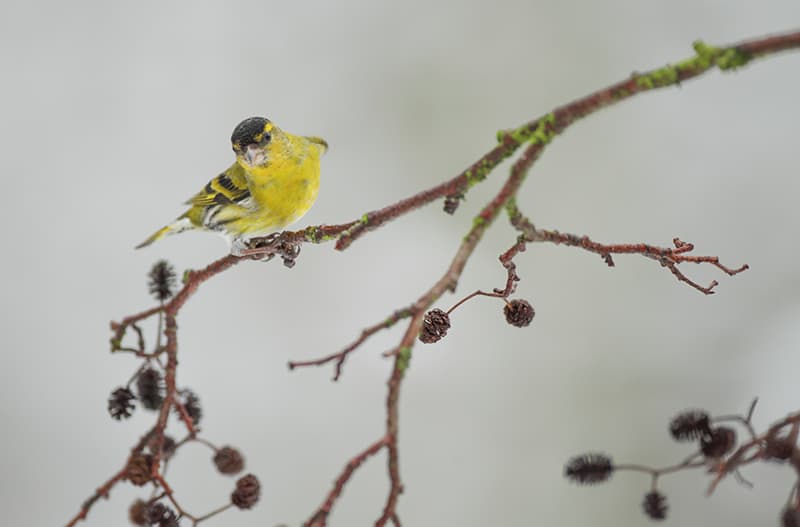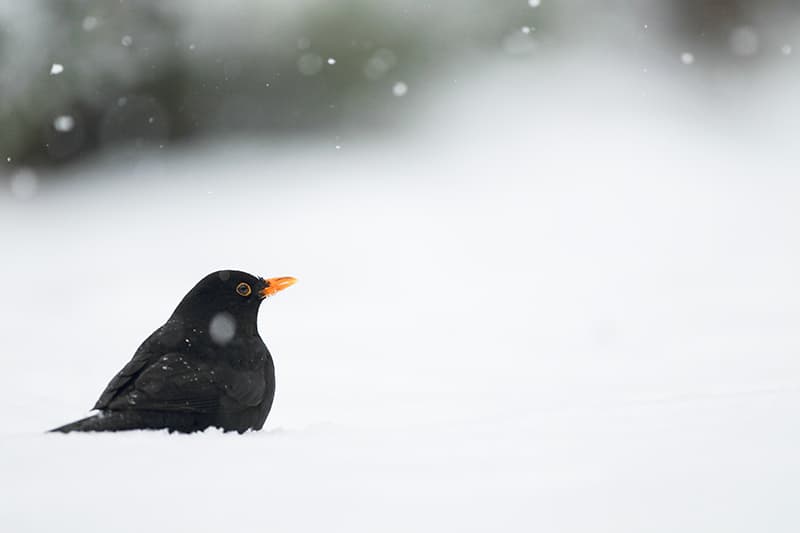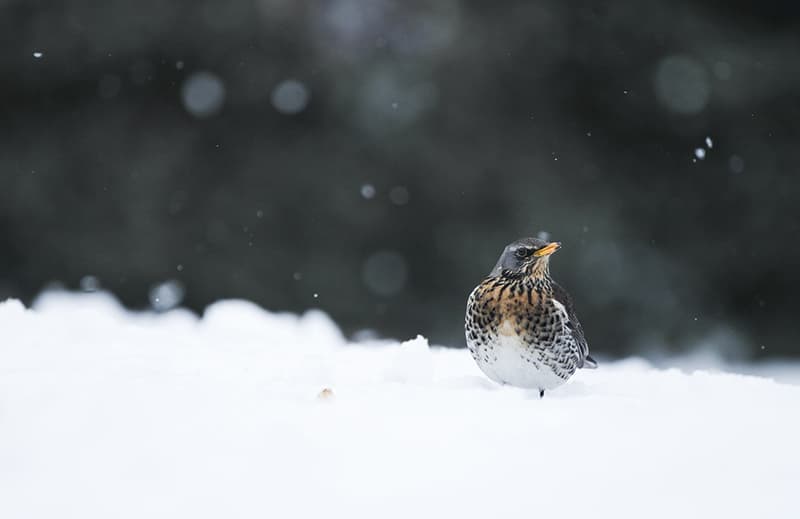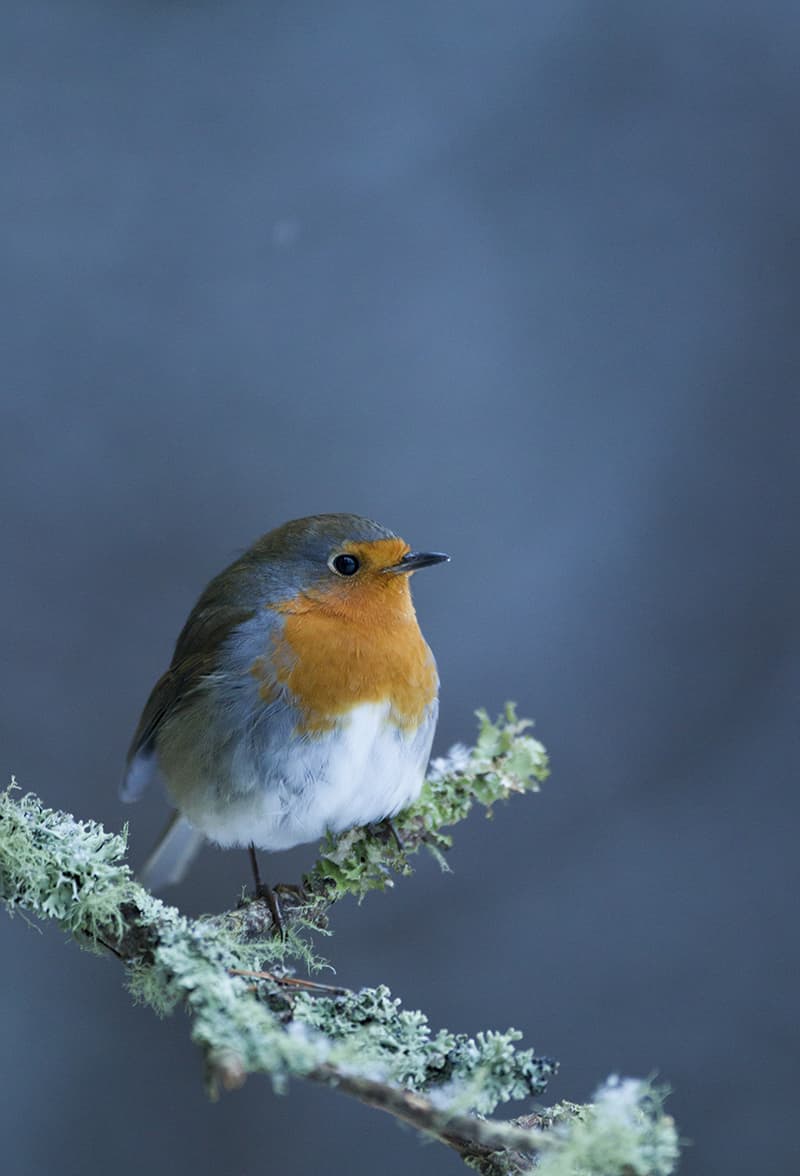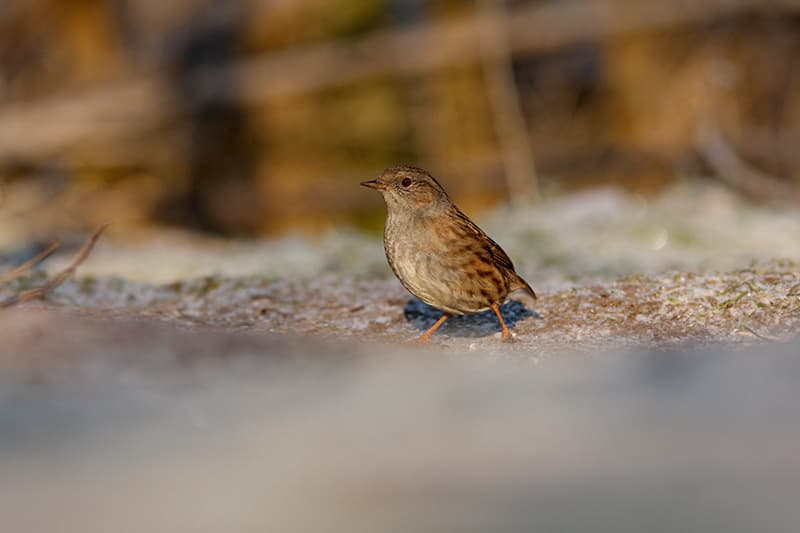As winter draws in, your garden becomes an attractive feeding stop for birds, with numbers boosted by visitors from the Continent. It may even attract a few exotic guests, too, such as canary-like siskins and dainty redpolls. Winter thrushes arrive in autumn, and, as redwings migrate under the cover of darkness, listen out at night for their faint ‘seeeep-seeeeep’ call.
With all these new additions, you’ve more reason than ever to head out into the garden over the Christmas period and set yourself up for some doorstep photographic opportunities.
Christmas photo project approach
The bonus of photographing in your garden is that the sight of a human shouldn’t alarm the birdlife too much. In winter, birds will be hungry as food is sparse, so if you provide a reliable source they’ll keep coming back. With a large variety of bird food on the market, choosing the best type may be difficult. However, remember that it isn’t just food you should offer – water is just as important.
Food types
Niger seed: These small black seeds are almost irresistible to small finches such as goldfinches, siskins and redpolls.
Fruit: Pick up a bag of apples in the supermarket and throw them on your lawn – winter thrushes love them.
Fat balls: These are rich in fat and provide a high-energy feast for your garden birds. Make sure you remove them from their net bags and place them in a feeder.
Mixed seed: This is the cheapest option and should bring in the flocks.
Peanuts: The classic bird food. You can buy them chopped or whole, and woodpeckers love them.
Positioning the food
Try to place your feeding station where it can be photographed easily. Mine is situated close enough to my shed so I can use it as a hide by opening one of the windows. For low-level shots, I use my sliding patio doors. I can lie in the warmth of my house and poke my lens through the gap. A chair hide is another good option – you can leave it near the feeders and the birds will quickly get used to it.
Aesthetics of the Christmas photo project
What puts a lot of people off photographing birds in the garden is the difficulty of getting a clean shot. Backgrounds are massively important, as a straggly mess of twigs or fence panels behind your feeders will be either dull or distracting. Try to get something with even coverage – an ivy-covered fence panel a few metres back will blur beautifully if you shoot wide open. The further your background is from your photography site, the softer it will be.
Perches can make an image. You can have the dullest, smoothest hazel branch that will add nothing, or you can have a gnarled, lichen-covered branch that will provide colour and texture. One trick I use is to replace the perches on a feeder with natural ones by simply inserting branches into the holes. The birds land on the natural perches and, if framed correctly, your viewers will not realise it is part of a feeder.
If it snows, I like to scatter apples and seed on the lawn. Overexpose the snow for a striking high-key image that will capture birds such as winter thrushes and finches in all their glory.
Behaviour
If you’re offering food, you’ll have more birds in the garden than normal, and this will increase competition around the feeders.
Greenfinches and goldfinches, two of our most exotic garden birds, will bicker with each other for food.
Chaffinches seem to have a phobia of landing on perches, although this is perfect for the wildlife photographer. They’ll hover like hummingbirds before snatching a seed from the feeder. Use fast shutter speeds to freeze the wings or go a little slower to get some motion blur.
With a steady stream of birds to your garden, predators won’t be far away. If you’re lucky – and the smaller birds are unlucky – a sparrowhawk may pay your garden a visit. Keep an eye out, and if they leave the kill behind they will probably return.
Now you know how to attract the birds, where to hide yourself and what to expect, the next step is easy – simply set up your feeding station and begin your winter project.

